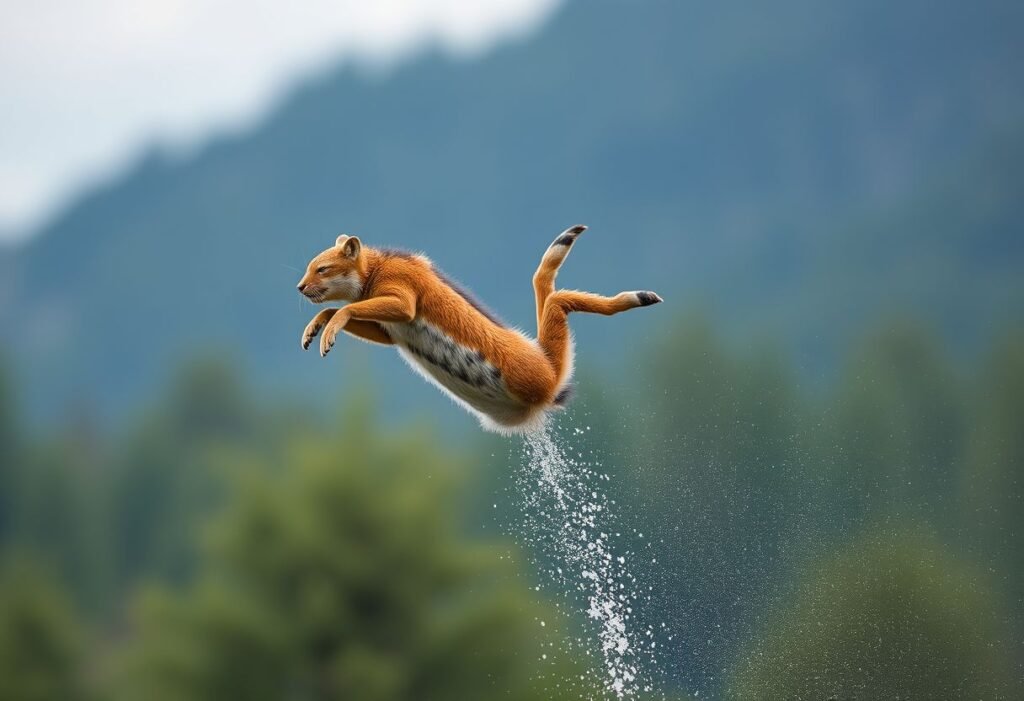In the fascinating realm of animal locomotion, the recently unveiled super-slow-motion videos have brought to light some of nature’s most incredible acrobatics. Among these, the expertise of the globular springtail stands out, captivating researchers and enthusiasts alike.
The Marvel of Animal Acrobatics
Animal movement is a complex subject of study, with each species showcasing unique adaptation and skills. Among these marvels, the globular springtail has captured the imagination of scientists with its remarkable ability to perform backflips. These tiny creatures, often overlooked due to their minute size, possess a unique anatomical structure that allows them to execute acrobatic maneuvers to escape predators or navigate their environment. The advent of slow-motion videography has enabled researchers to examine these backflips in stunning detail, bringing forth insights into the dynamics of their jumps and how these insects maintain balance and control during their impressive feats.
Innovative Technology Unveiling Secrets of Nature
Recent advancements in videography have provided scientists with the tools needed to observe animal behavior in unprecedented detail. Slow-motion cameras capture the rapid movements of creatures like the globular springtail, revealing intricate mechanics often missed by the naked eye. Through this technology, researchers can analyze the forces at play during the springtail’s jump, examining how it utilizes its body structure to propel itself into the air and complete a backflip. This innovation not only enhances our understanding of insect locomotion but also inspires potential applications in robotics, where mimicking such movements could lead to advanced designs for agile machines.
Unraveling the Mystery of Insect Locomotion
The study of insect locomotion is more than just an exploration of movement; it’s a gateway to understanding evolutionary adaptations. The globular springtail’s ability to perform backflips highlights its evolutionary advantage in escaping predators. By analyzing the biomechanics of this jump, scientists can glean insights into how other species adapt their movement strategies for survival. This aspect of research is crucial, not only for entomologists but also for ecologists who are interested in biodiversity and environmental interactions. Understanding how these small creatures navigate their world can shed light on the larger ecological dynamics at play.
Applications in Robotics and Engineering
The unique backflipping abilities of the globular springtail hold promise beyond biological interest. The study of this insect’s leaps can inform the design of agile robots capable of traversing complex terrains. Robotics engineers are increasingly looking to nature for inspiration, and the biomechanics of the globular springtail provide a model for creating robots that can perform complex movements with precision. By adopting designs that mimic these natural adaptations, engineers may develop machines that can explore areas inaccessible to traditional robotic designs or navigate challenging environments with ease.
Investigating the Future of Animal Sciences
The dynamic nature of animal sciences is poised to expand as more studies highlight the incredible capabilities of seemingly ordinary creatures. The globular springtail exemplifies how deeper investigations can reveal extraordinary abilities within the animal kingdom. Researchers are encouraged to continue exploring the complexities of animal movement, as such studies often yield insights applicable across various scientific disciplines, enhancing our grasp on biology and engineering alike, and paving the way for future innovations.
A Call to Action for Future Research
The enchanting world of the globular springtail serves as a paradigm of the wonders awaiting discovery in the animal kingdom. As scientists capture unprecedented footage of these incredible backflips, it becomes clear that continued research in this field is essential. Not only can further investigations deepen our understanding of biomechanics and behavior, but they may also lead to revolutionary applications in both ecology and engineering. Therefore, a collaborative approach to studying animal locomotion seems imperative. The more we learn about these resilient creatures, the more it enriches our comprehension of nature’s intricate designs.
Disclaimer: The findings and perspectives expressed in this article are based on ongoing research and are intended for informational purposes. Always consult primary sources or experts in the field for more accurate interpretations.





















